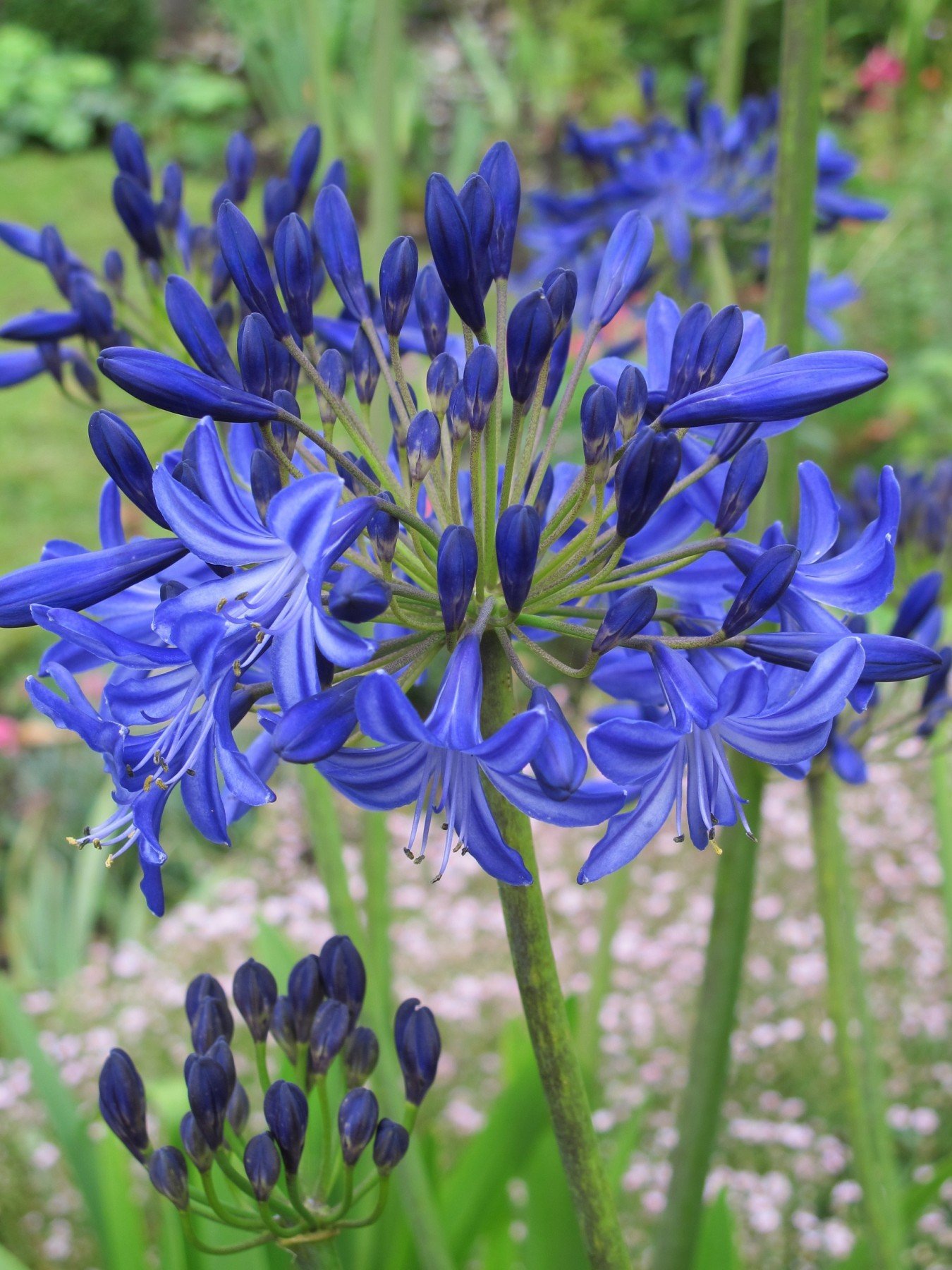Seasonal Agapanthus Treatment: Getting Ready For Wintertime and Summertime
Releasing the Secret to Successful Agapanthus Farming: Advice for a Flourishing Yard
In the world of gardening, cultivating agapanthus efficiently needs a critical strategy that encompasses numerous facets of plant care. With cautious attention to information, one can unlock the keys to nurturing these magnificent blossoms, resulting in a garden that grows with charm and vibrancy. By recognizing the subtleties of agapanthus growing, one can develop an environment where these plants grow and grow abundantly. In the complying with discussion, we will explore essential suggestions and tricks that will certainly guide you in the direction of a thriving agapanthus garden, offering insights into ideal techniques, dirt problems, sprinkling strategies, and much more.
Planting Agapanthus: Finest Practices
When growing Agapanthus, appropriate dirt prep work is vital for making certain effective development and advancement of these attractive blossoms. Agapanthus, generally called Lily of the Nile or African lily, flourishes in well-draining soil with a slightly acidic to neutral pH degree - Agapanthus. Before planting, it is essential to change heavy clay soils with organic issue such as compost or peat moss to boost water drainage and offer important nutrients for the plants
To grow Agapanthus, pick a location that gets full sunshine to partial shade, as this will certainly promote healthy and balanced development and plentiful flowering. Dig a hole two times the size of the plant's root ball and put the Agapanthus at the exact same deepness it was previously growing. Delicately backfill the hole with dirt, weighing down firmly to get rid of any type of air pockets around the origins.
Water the newly grown Agapanthus extensively and remain to maintain the dirt evenly damp, specifically during the plant's active growing season. Agapanthus. Using a well balanced plant food once a month can further sustain the plant's growth and blooming. By following these finest methods for growing Agapanthus, you can create a magnificent display screen of these fascinating blossoms in your garden
Perfect Dirt Issues for Agapanthus
For optimal growth and blooming success of Agapanthus plants, making certain the dirt conditions are suitable is essential. Agapanthus prospers in well-draining soil with a slightly acidic to neutral pH level ranging from 6.0 to 7.0. This kind of soil enables for adequate water drain, protecting against waterlogging which can lead to root rot. To boost soil water drainage, think about including raw material such as compost or peat moss when preparing the growing site. In addition, Agapanthus prefers soil that is rich in nutrients, so integrating a balanced fertilizer throughout the expanding season can advertise healthy development and vibrant flowers.

Watering and Fertilizing Tips
To make certain healthy growth and dynamic flowers, proper watering and fertilizing strategies are crucial for successful Agapanthus growing. Agapanthus plants take advantage of regular watering, especially throughout the expanding period. It is recommended to water deeply as soon as a week, making sure the soil is wet but not soaked. Throughout heat or in pots, more constant watering might be necessary to avoid the dirt from drying totally.
When it pertains to feeding Agapanthus, a balanced fertilizer with equal parts nitrogen, phosphorus, and potassium can be used in the springtime this contact form to advertise healthy and balanced development and blooming. Slow-release fertilizers are excellent for supplying nutrients progressively over a prolonged duration. Avoid over-fertilizing, as this can cause extreme foliage growth at the expense of blooms.
In addition, including raw material like garden compost into the dirt can boost nutrient degrees and boost dirt framework, aiding in the total wellness of the Agapanthus plants. By adhering to these watering and feeding pointers, gardeners can ensure their Agapanthus plants flourish and create sensational displays of blossoms.
Trimming and Deadheading Methods
Correct trimming and deadheading strategies play a critical function in preserving the health and visual appeals of Agapanthus plants, matching the necessary practices of watering and fertilizing for effective growing. Pruning Agapanthus entails removing spent blossom heads, dead or yellowing leaves, and general shaping of the plant to advertise better development. Deadheading, the procedure of getting rid of faded blossoms, not only boosts the plant's appearance however likewise encourages additional growing.
When deadheading Agapanthus, it is a good idea to clip off the flower stem at the base using sharp, tidy shears. This process reroutes the plant's power from seed manufacturing back into root and vegetation growth, advertising a much healthier and much more robust plant. Routine deadheading can expand the flowering duration of Agapanthus and avoid self-seeding, which can bring about congestion.
In regards to pruning, Agapanthus normally take advantage of a light trim after blooming to clean the plant and urge fresh development. Reducing back the invested flower stems and eliminating any kind of dead or damaged vegetation aids keep the plant's vigor and total look. However, it is vital to prevent reducing right into the crown of the plant, as this can deteriorate its health.

Protecting Agapanthus From Vermins and Diseases
Implementing effective pest and condition management approaches is important to protecting the wellness and vitality of Agapanthus plants in farming. One common pest that affects Agapanthus is the Agapanthus borer, a caterpillar that tunnels right into the plant, creating damages to the flowers and leaves.
In addition to bugs, Agapanthus are at risk to conditions such as origin rot and fungal fallen leave areas. By staying vigilant and addressing bug and disease concerns quickly, garden enthusiasts can aid their Agapanthus grow and flourish.

Conclusion
To conclude, successful farming of agapanthus requires proper growing strategies, perfect soil problems, appropriate watering and feeding, normal trimming and deadheading, and security from illness and parasites. By complying with these tricks and pointers, gardeners can make certain a growing garden loaded with gorgeous agapanthus blossoms. Agapanthus. Bear in mind to preserve learn this here now regular treatment and attention to detail to promote the wellness and longevity of these magnificent plants
When planting Agapanthus, appropriate dirt prep work is crucial for making sure successful development and growth of these stunning flowers.Water the freshly grown Agapanthus extensively and continue to maintain the dirt equally damp, specifically during the plant's energetic expanding season.For ideal growth and flowering success of Agapanthus plants, making sure the dirt problems are optimal is crucial. When hair transplanting or growing Agapanthus, make certain look here the dirt is well-prepared to supply the required structure for the plants to establish themselves effectively. One usual parasite that affects Agapanthus is the Agapanthus borer, a caterpillar that passages right into the plant, triggering damage to the flowers and fallen leaves.